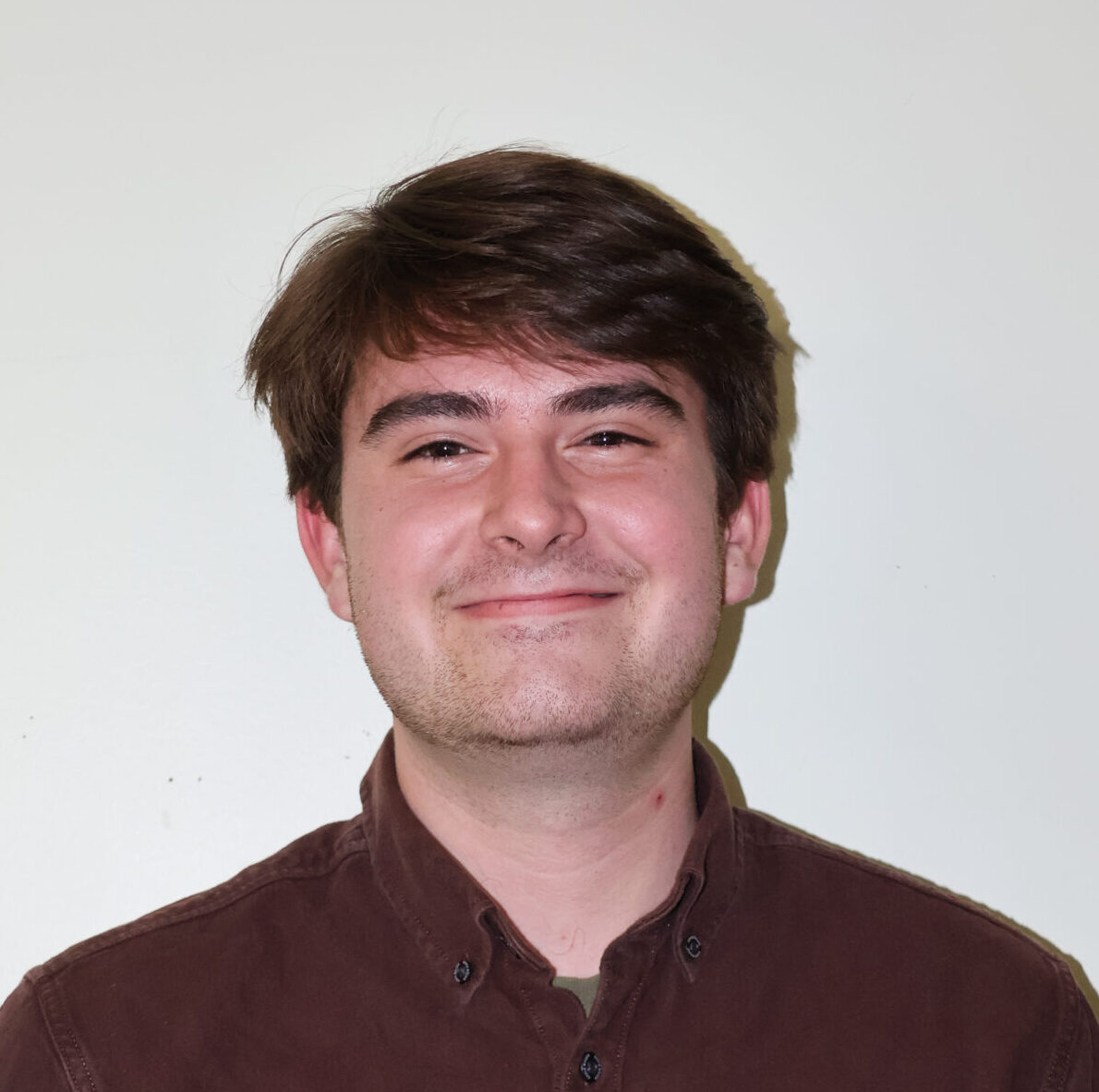Join Editor-in-Chief Griffin Krueger as he recounts his experience on the Midnight Bike Ride.
From the Editor’s Desk: Midnight Bike Riding
This past Thursday evening and Friday morning I took part in one of the most anticipated annual events on Loyola’s calendar — Timothy Gilfoyle’s Midnight Bike Ride. Gilfoyle, a history professor whose area of study is American urban and social history, has been leading the ride since 1989.
This year’s ride was my second time embarking on the two-wheeled journey through time — join me as I recount the trials of tribulations of my fellow riders, as we all slowly slipped into sleep-deprived madness.
Before we departed from the Lake Shore Campus, Gilfoyle laid out some essential safety tips, instructing each of us to find a buddy to avoid getting split off from the group. I immediately locked eyes with my good friend — fourth-year environmental policy major Scotty Monteith.
We were more or less joined at the spoke for the next eight hours. Whenever we briefly lost track of each other we’d reconvene with the seminal phrase, “hey buddy” — something we said so often I’m sure our fellow riders quickly grew annoyed by the quip. For us, though, it was a gift that only kept on giving.
Throughout the ride, Gilfoyle frequently stopped the group at historically and architecturally significant landmarks to provide brief lectures on each site’s contribution to Chicago’s development.
The initial stops told the story of the Far North Side, as Gilfoyle led us into the courtyard of Edgewater’s Nicholas Senn High School, which he said is an example of the development of public education in the U.S.
“Beginning in 1900 there were only about 300,000 high school graduates in the entire United States,” Gilfoyle told the congregated cyclists. “Over the course of the next 20 years that number tripled and by the 1940s there were more than a million. It was largely because of the rise of progressive education, illustrated by this building.”
As we worked our way south towards Wrigley Field, it became clear Scotty was dealing with an untenable situation whilst journeying on his borrowed bike. It was much too small for him and with every pedal rotation his knees nearly hit the handlebars — clearly meant for a child.
“My quadriceps are killing me,” was all he could muster about the little bike.
We soon came to one of the most important stops on the tour — a four-way intersection on North Southport Road which perfectly encapsulates the four P’s around which life revolved for European immigrants in 19th century Chicago – the parish, the pub, the political machine and the parochial.
After a brief stop at what remains of Chicago’s first steel, we crossed the river into the Northwest Side — where unbeknownst to us, disaster was awaiting us.
On the second leg of our ride up and down the 606 trail we were taking advantage of the smooth pavement to pedal at top speeds.
My buddy and fourth-year political science major Ethan Jackson — who was enjoying the ride on his 60-year-old 1964 Schwinn Collegiate 5 Speed — fell victim to a snapped chain while speeding down the path, causing him to spin out and scrape his elbow and knee.
After a few minutes spent helplessly trying to put the chain back together, Ethan was forced to admit defeat and split off from the group. He sought out the nearest Divvy bike station, where he’d rent a bicycle to complete the ride.
Despite his physical pain, intense grief and prolific embarrassment, Ethan found the strength to provide an invaluable comment to The Phoenix on his destitute situation.
“It’s unfortunate,” Ethan said. “I’m kinda pissed, I knew it was going to happen.”
After speeding across Goose Island to catch up with the pack, we were able to bandage Ethan’s wounds with a pocket knife, tearing up his Champion crew neck and wrapping it around his elbow with duct tape. He proudly wore his newly acquired Champion tank top for the rest of the ride.
The ride continued moving south, and by around 1:30 a.m. we’d reached River North and the downtown area. Gilfoyle led us through the Near West Side and eventually further south to the Chicago Fire Department Academy, located at the site of the O’Leary barn where the Great Chicago Fire of 1871 was supposedly set ablaze.
Bike issues persisted for many, as the realities of pedaling for nearly five hours set in. An early morning delirium began to take hold. Before turning back north for the long trek home we made a stop at the Clarke-Ford house — the oldest remaining home in Chicago — on South Indiana Street.
We crossed South Lakeshore Drive and entered the museum campus, stopping outside Soldier Field where da Chicago Bears lose football games, despite their best efforts. Me and another friend of mine, fourth-year history major Ryan Maddigan, took it upon ourselves to lay out on grass near the stadium — I never would’ve thought the simple act of resting could elicit such ecstasy.
Being well past 3 a.m. at this point, it’s very possible in an alternate timeline we never would’ve gotten up from the grass, soon to become one with the sod. But alas, we had no choice but to get back on our bikes.
It was at this point the unthinkable happened — I lost my buddy. Scotty, presumably at his wits end riding the mini-bike, decided to get on the Red Line and meet us for breakfast later in the morning.
The rest of us moved on to Grant Park and were treated to magnificent views of the world famous Chicago skyline. Gilfoyle explained where we were standing was originally submerged within Lake Michigan.
“On Michigan Avenue ahead of us you can see the skyscraper street wall that is unobstructed like that,” Gilfoyle said. “That’s considered to be one of the landmark parts of Chicago’s architecture.”
Following the incredible experience of biking down an empty Michigan Avenue and crossing the river downtown, we began making our way through Lincoln Park and Lakeview to the tour’s final and most anticipated stop — the 24-hour Golden Apple Diner.
Around 4:30 a.m. when we finally arrived I promptly ordered a meal typically reserved for only the most prominent aristocrats — a short stack of pancakes, two over-easy eggs and a cut of breakfast ham.
“All concepts of time are out the window,” Ryan said as we waited for our food. “I’m a 10:30 to 7:30 kinda guy, and this is not that.”
As we were wrapping up our meal, Scotty made his triumphant return — unfortunately well after we’d ordered. He was relegated to Ryan’s waffle.
Rejuvenated, we began the final trek back to Rogers Park. Ryan and I said good morning and goodbye after crossing the all too familiar intersection at West Devon Avenue and North Glenwood Avenue.
I finally got to bed around 7:30 a.m. and remained in a deep stasis until 3 p.m., when I woke up ready to attack the day.
-

Griffin Krueger is the Editor-in-Chief of The Phoenix. He began working for The Phoenix during his first week at Loyola and has been writing about the university, the surrounding community and the city of Chicago ever since. Krueger previously worked as Deputy News Editor and Sports Editor and is a fourth-year studying political science with a minor in history. Originally from Billings, MT, he enjoys reading and exploring the city on his bike.
View all posts
Topics
Get the Loyola Phoenix newsletter straight to your inbox!


